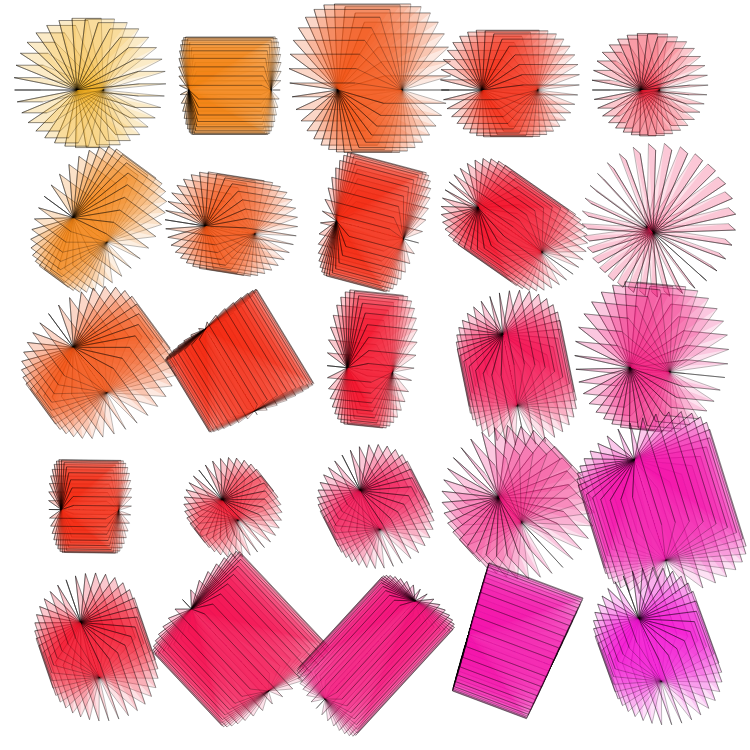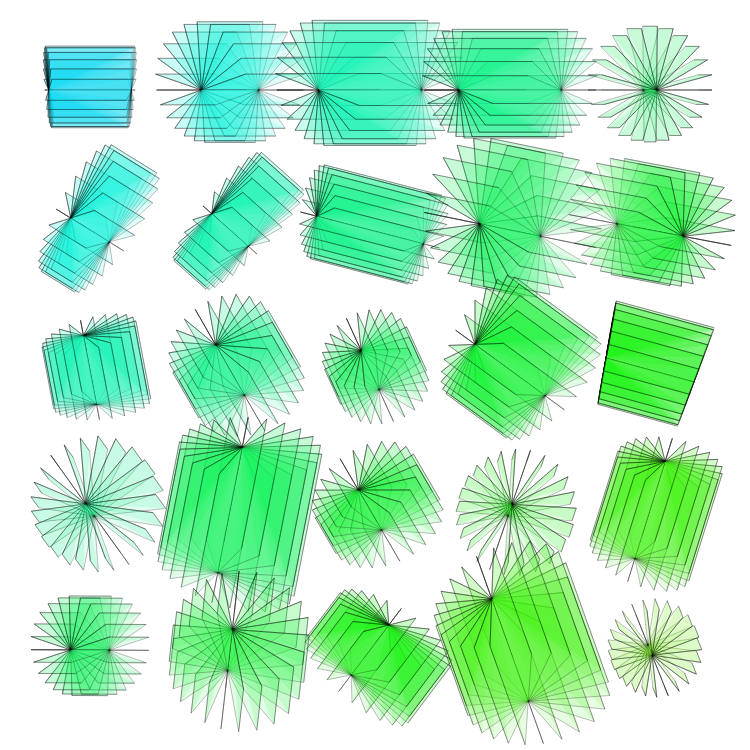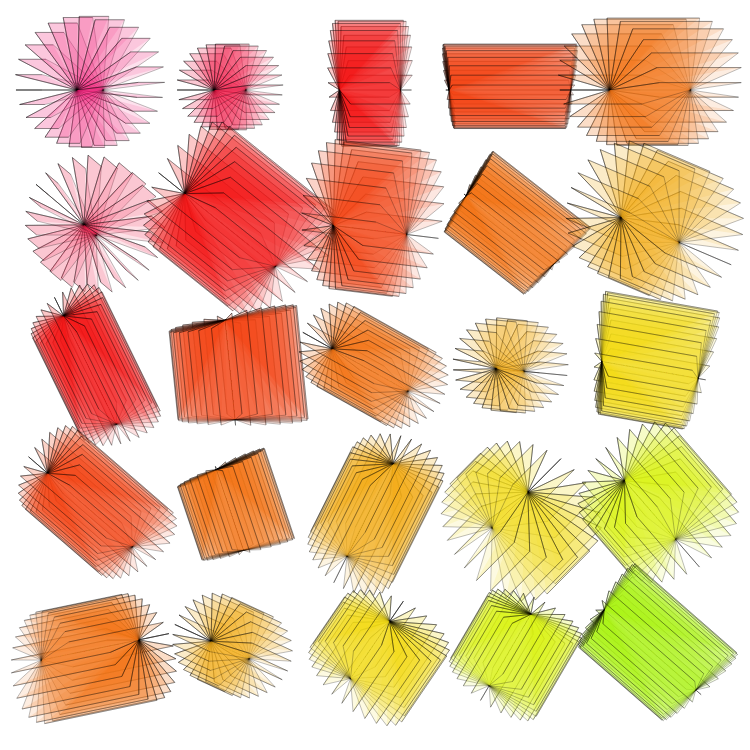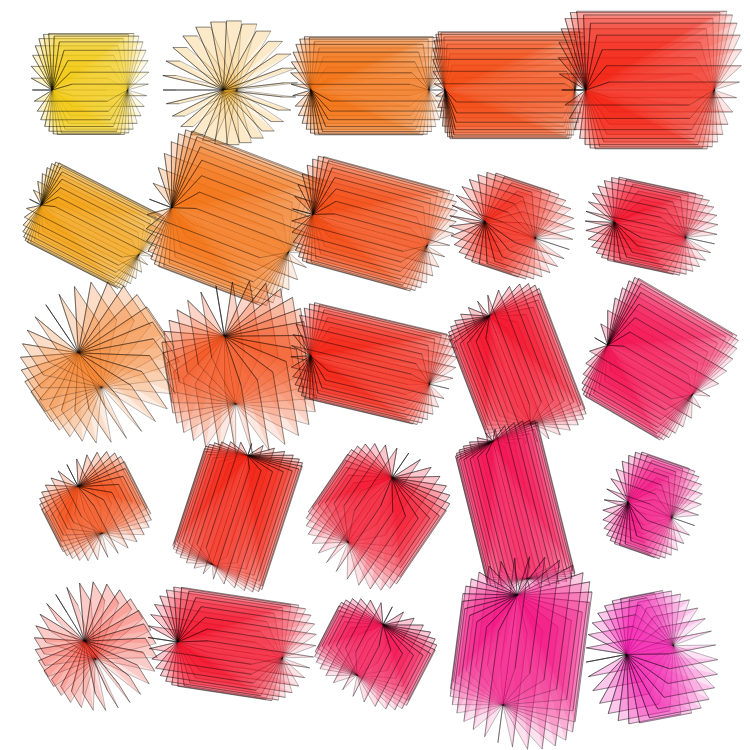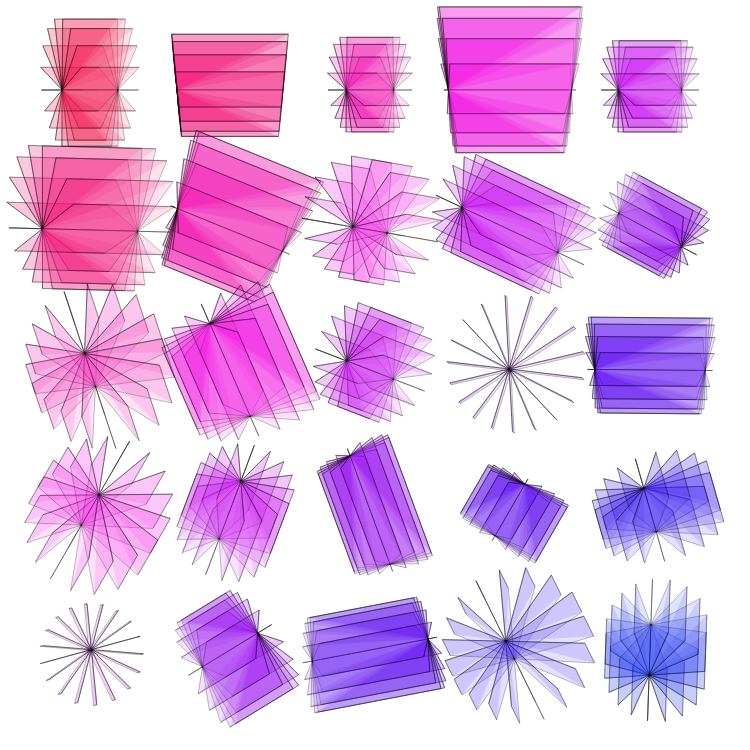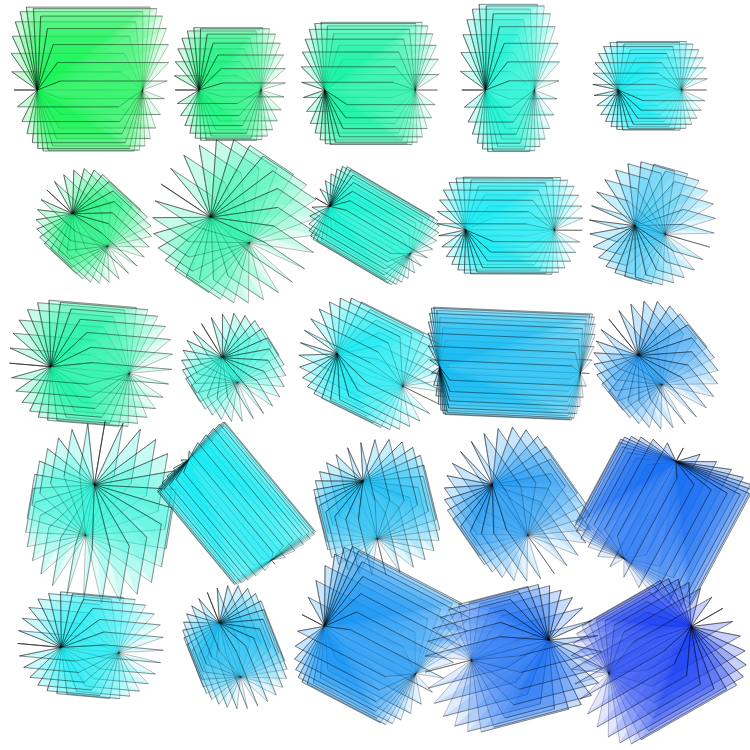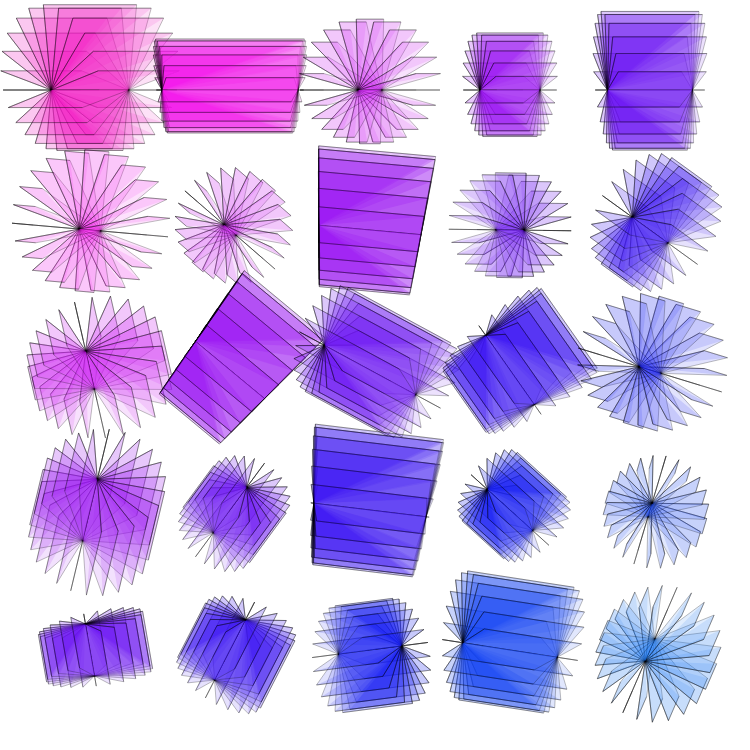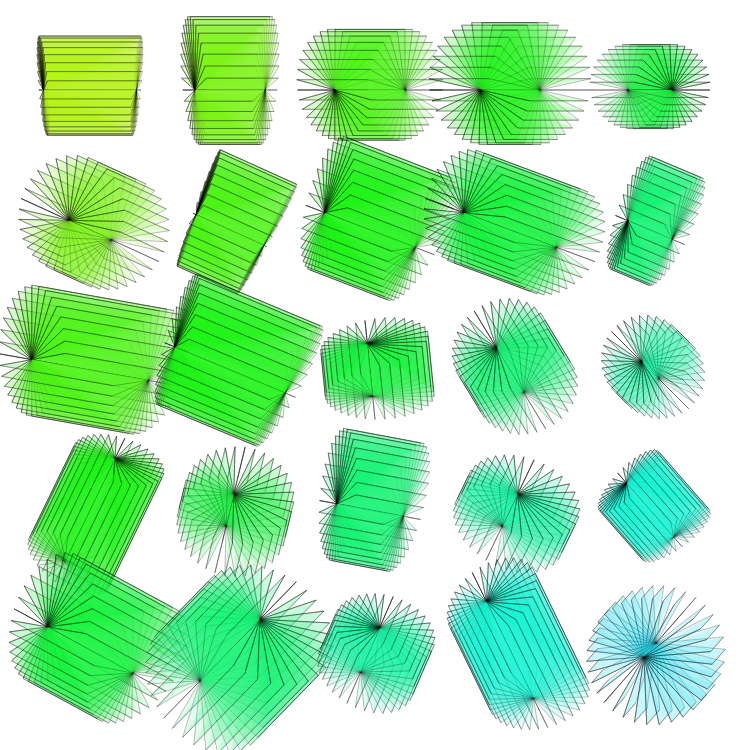Spatial Cylinders
IPFS
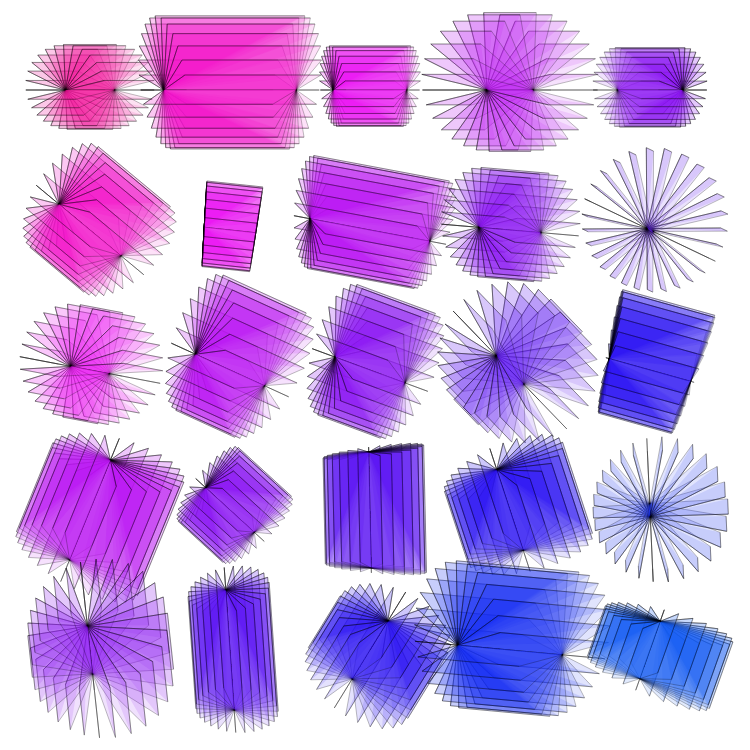
27 May 2023•TEZOS•IPFS
Spatial Cylinders, version 2.0, 2023.
Around 1975 I created a plotter art piece by the same name. The medium was very primitive then. It was a simple piece where I joined two overlying circles of points together with straight lines. The attempt was to create a primitive form of volume (3D); to break out of the flat plane of plotter paper. I rendered them in a matrix format (a tessellation of sorts).
Conceptually the new version of a cylinder is like taking a book and rotating it's covers around it's spline to touch. I use a wire-frame approach, rotating a random number of slices (pages of the book) around a vertical axes. I store each cylinder as 3D coordinates in arrays and manipulate their data with scaling, rotation and perspective equations. I use a contrived multi-axis rotation scheme rather than pure randomness. I translate each cylinder into its place in the display matrix similar to the original work.
The original version was black line on a white background. Here, I render each cylinder in a random color (again contrived, the overall the color scheme follows an analogous color paradigm) and I add transparency so as to allow you to see the various pages. The overlapping transparent planes amplify a cylinders' color affording a pleasant result.
Around 1975 I created a plotter art piece by the same name. The medium was very primitive then. It was a simple piece where I joined two overlying circles of points together with straight lines. The attempt was to create a primitive form of volume (3D); to break out of the flat plane of plotter paper. I rendered them in a matrix format (a tessellation of sorts).
Conceptually the new version of a cylinder is like taking a book and rotating it's covers around it's spline to touch. I use a wire-frame approach, rotating a random number of slices (pages of the book) around a vertical axes. I store each cylinder as 3D coordinates in arrays and manipulate their data with scaling, rotation and perspective equations. I use a contrived multi-axis rotation scheme rather than pure randomness. I translate each cylinder into its place in the display matrix similar to the original work.
The original version was black line on a white background. Here, I render each cylinder in a random color (again contrived, the overall the color scheme follows an analogous color paradigm) and I add transparency so as to allow you to see the various pages. The overlapping transparent planes amplify a cylinders' color affording a pleasant result.
I've been involved in making art with the computer since the early 1970's. I’m one of the few early pioneers who’s still practicing Generative Art today.
36 EDITIONS
•3 RESERVES
minted
8 / 36
fixed price
2.5 TEZ
Lorem ipsum project longer longer
0.00001 ETH
Lorem ipsum project longer longer
0.00001 ETH
Lorem ipsum project longer longer
0.00001 ETH
Lorem ipsum project longer longer
0.00001 ETH
Lorem ipsum project longer longer
0.00001 ETH
Lorem ipsum project longer longer
0.00001 ETH
Lorem ipsum project longer longer
0.00001 ETH
Lorem ipsum project longer longer
0.00001 ETH
Lorem ipsum project longer longer
0.00001 ETH
Lorem ipsum project longer longer
0.00001 ETH
Lorem ipsum project longer longer
0.00001 ETH
Lorem ipsum project longer longer
0.00001 ETH
Lorem ipsum project longer longer
0.00001 ETH
Lorem ipsum project longer longer
0.00001 ETH
Lorem ipsum project longer longer
0.00001 ETH
Lorem ipsum project longer longer
0.00001 ETH
Lorem ipsum project longer longer
0.00001 ETH
Lorem ipsum project longer longer
0.00001 ETH
Lorem ipsum project longer longer
0.00001 ETH
Lorem ipsum project longer longer
0.00001 ETH
Lorem ipsum project longer longer
0.00001 ETH
Lorem ipsum project longer longer
0.00001 ETH
Lorem ipsum project longer longer
0.00001 ETH
Lorem ipsum project longer longer
0.00001 ETH
